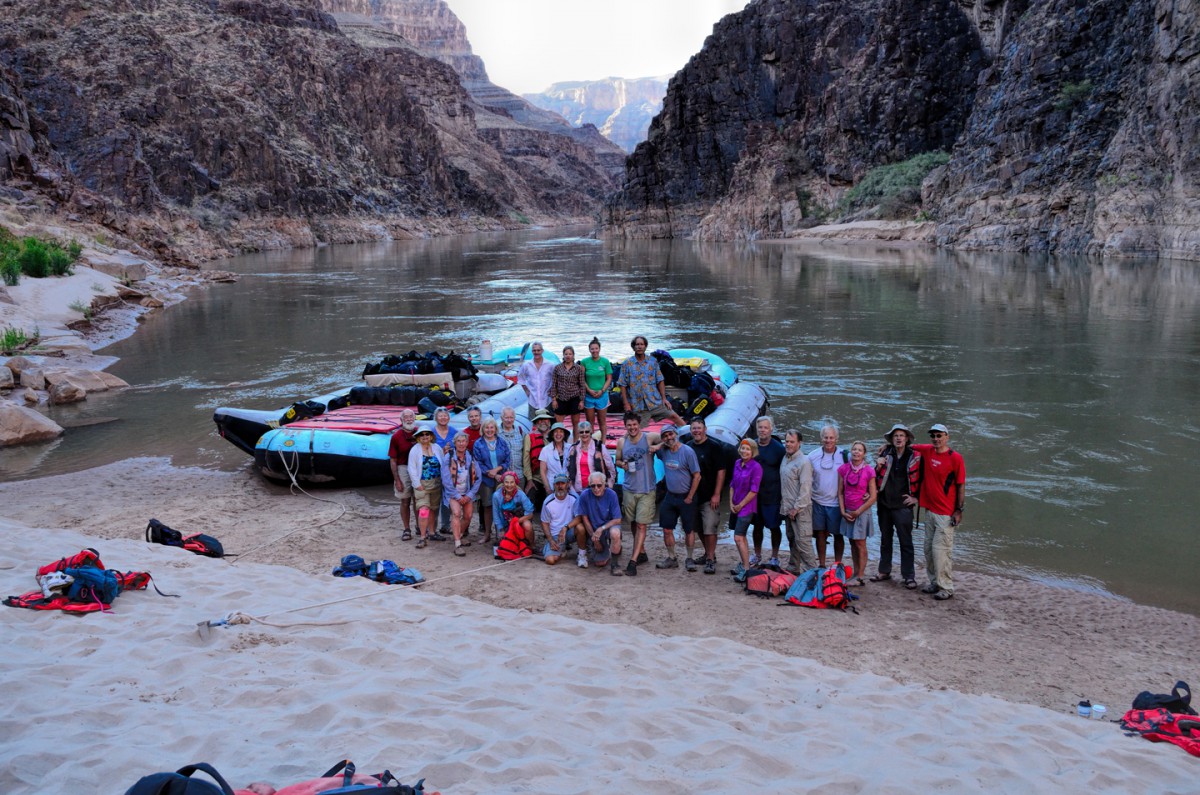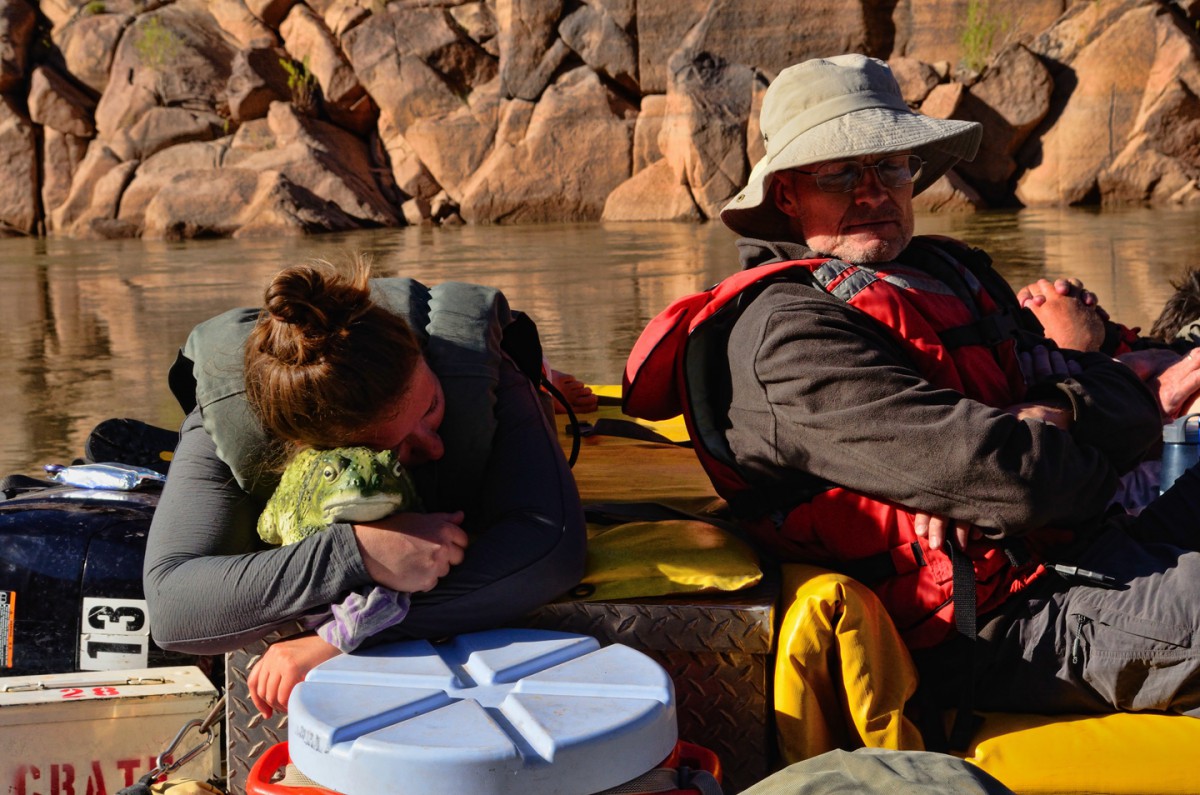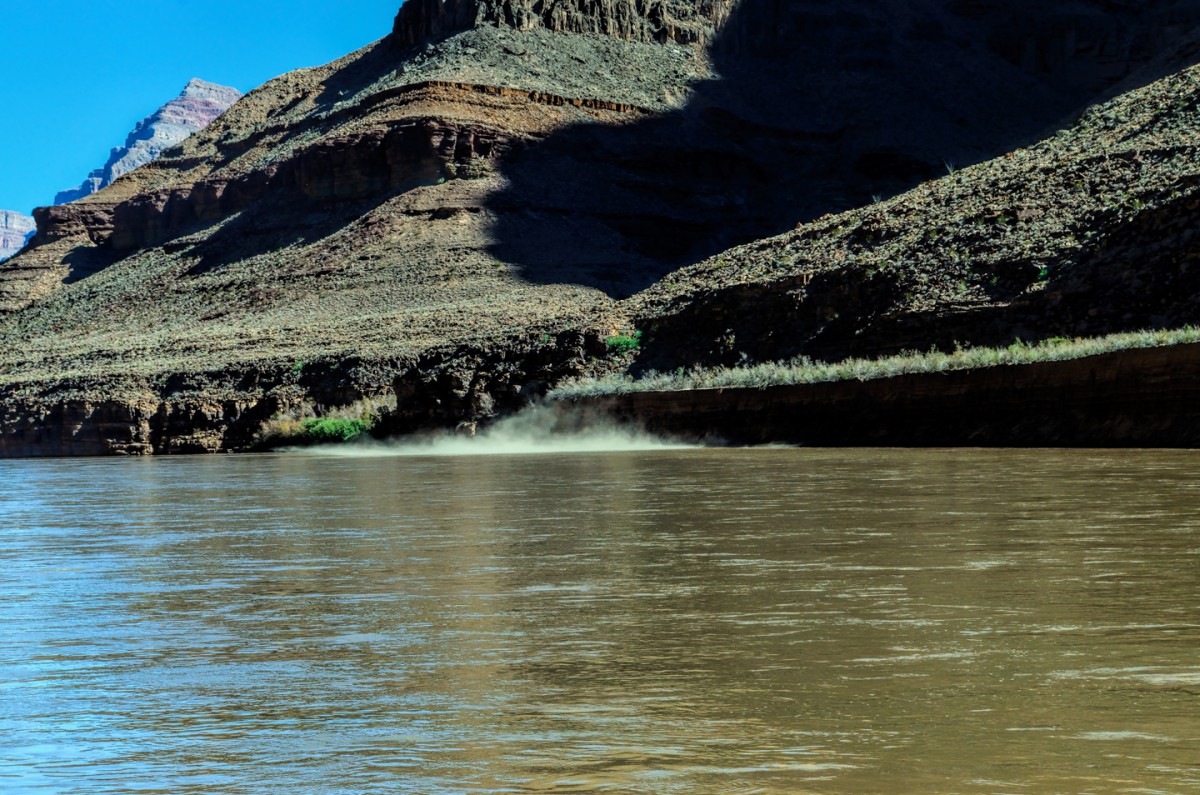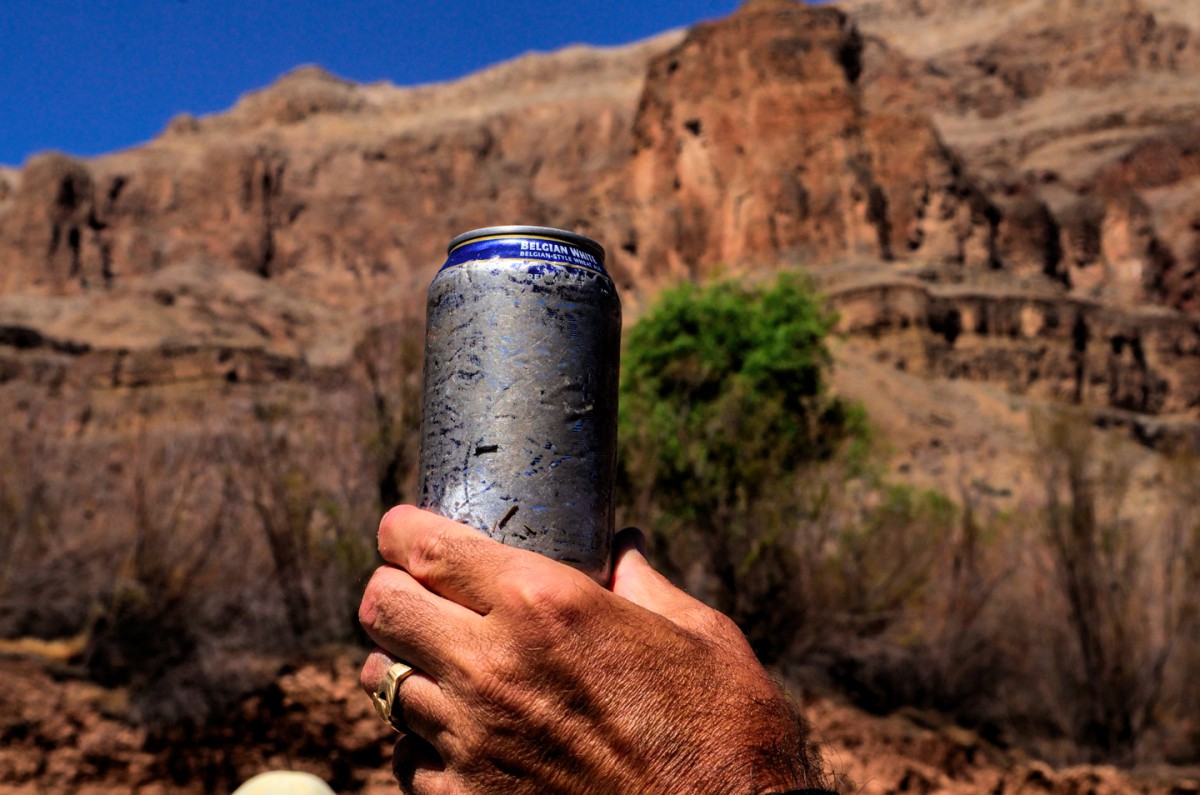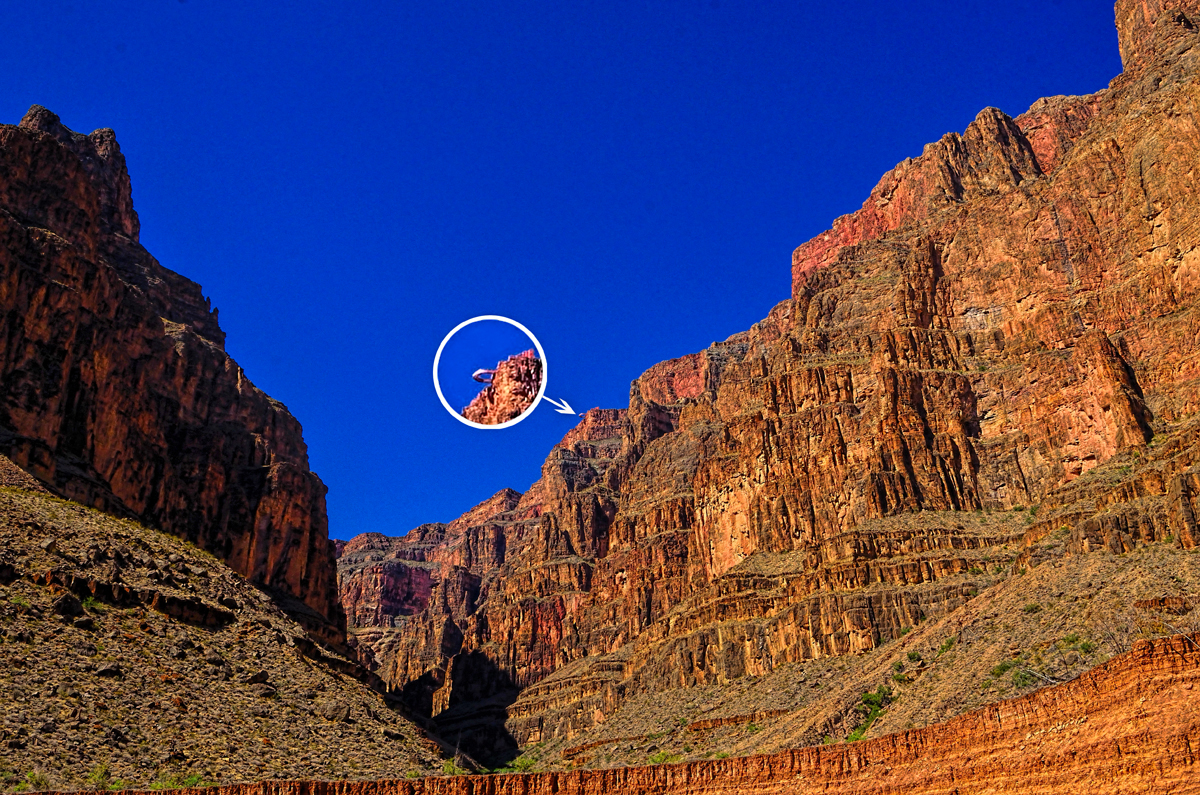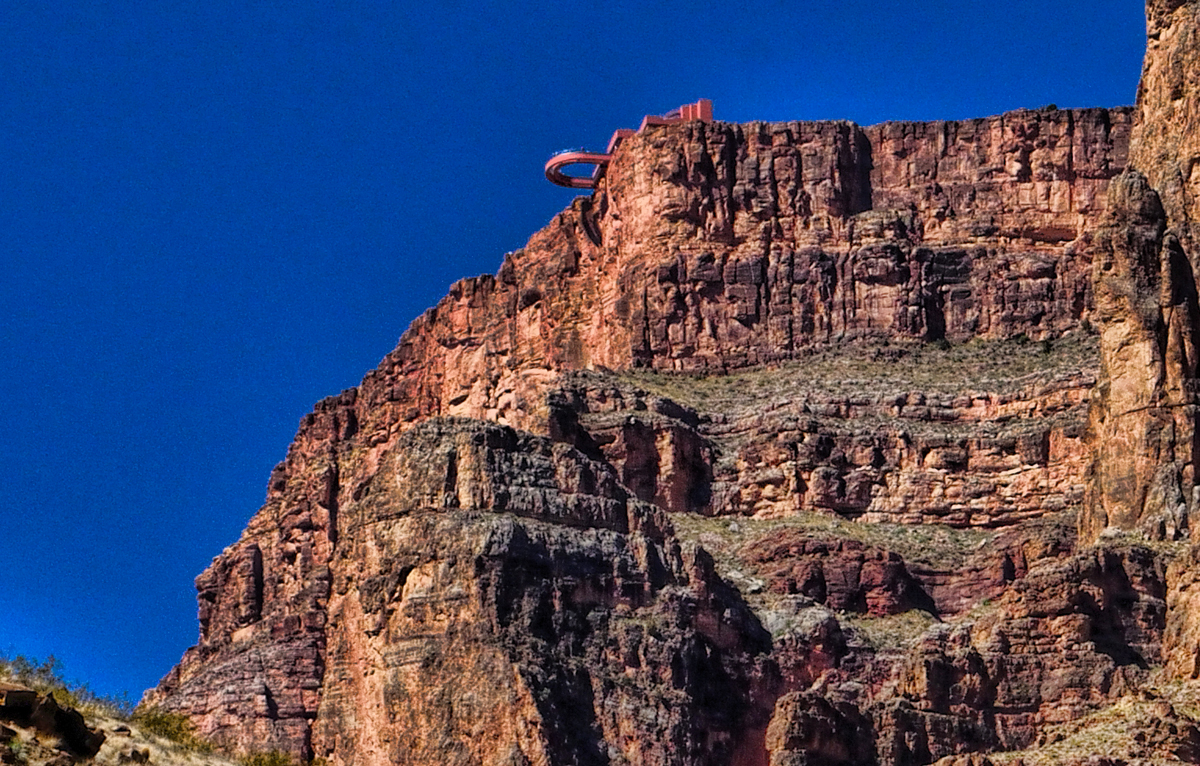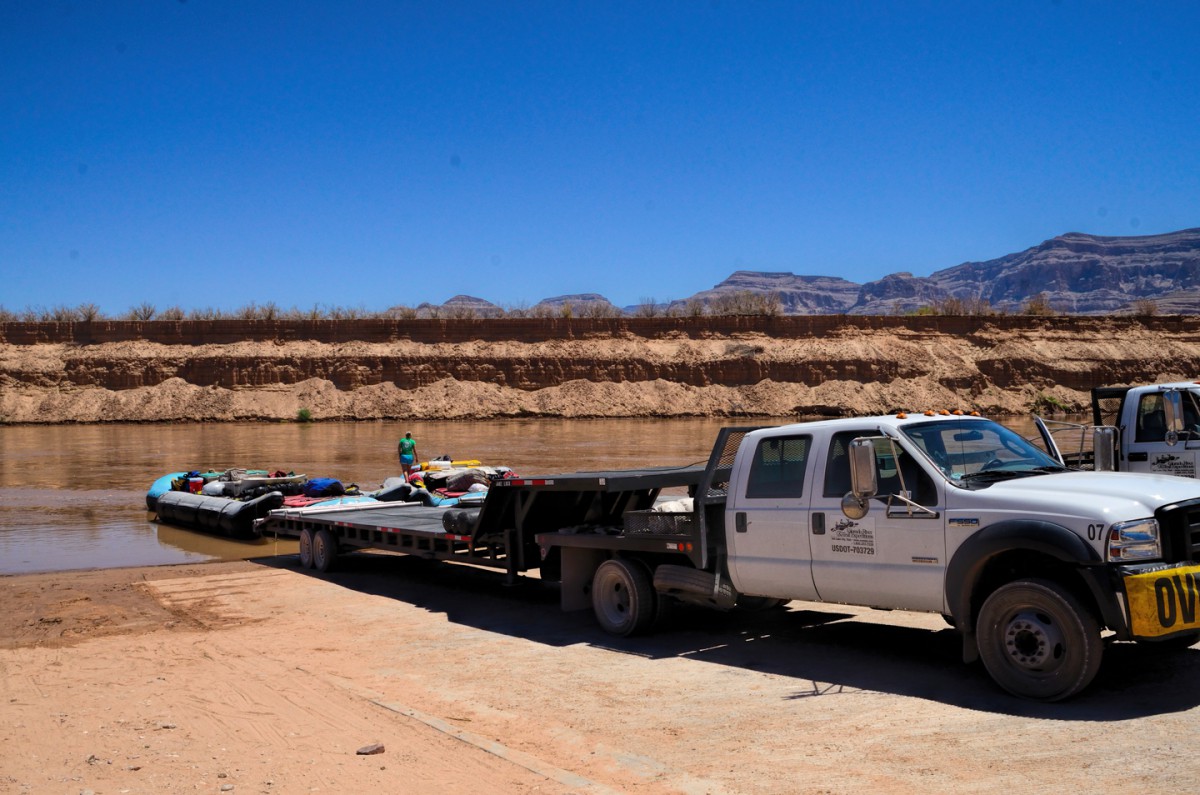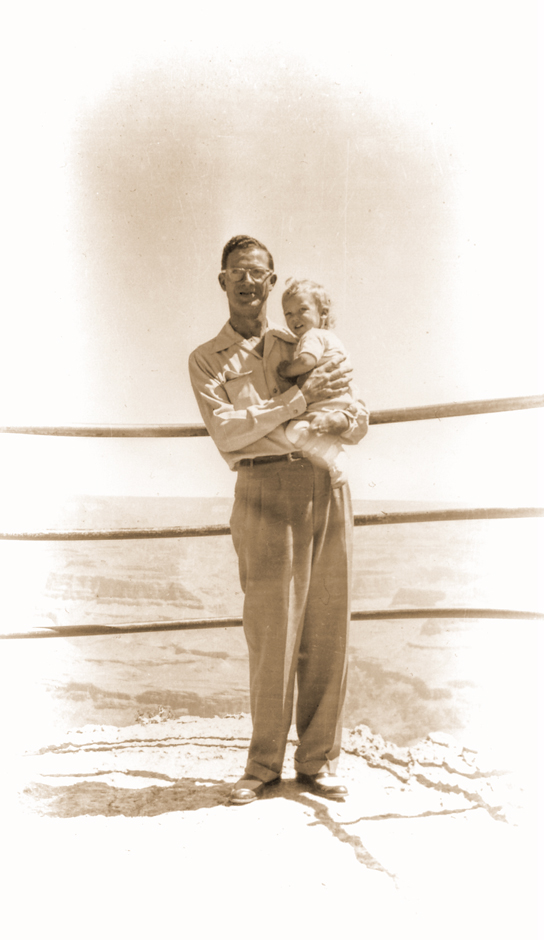Day Seven! COFFEE! And another beautiful morning in the Grand Canyon. This day started out a bit differently. We had our breakfast, broke down the camp, loaded the rafts, suited up, and climbed aboard. But instead of firing up the outboard and motoring away downriver, John pulled out a well-worn copy of Desert Solitaire, a book by the late Edward Abbey, one of my own favorite authors. Abbey was passionate about the sanctity of the environment, and he had a special affection for the desert southwest. John read several passages from the book of essays, read to us for at least half an hour, and we all listened with rapt attention.
The text was perfect for the setting, and after our experiences over the last few days, we all had a newfound appreciation for the sentiments so eloquently expressed in Abbey's writings.
Our first order of business, once we got moving, was 209 Mile Rapid, not all that rough, but longish, with an 8 foot drop. Next came 212 Mile Rapid (also known as the Little Bastard), and a mile or so beyond that, Pumpkin Springs.
The reason for the name was immediately obvious: a rounded, gourd-shaped travertine bowl extended out from the bank and down into the river, and the smooth sides of the formation were stained an orange color by the minerals in the water. We pulled over and scrambled up the slope for a closer look, and it was quite interesting. This was a thermal spring, with the appearance of a perfect, natural hot tub, but this was not a place where a good soak would be therapeutic. The water, a sickly green in color, was loaded with floating clots of minerals that looked a whole lot like sewage.
Worse: the water in this spring is chock-full of arsenic, around 1100 ppm. (Anything above 50 ppm is considered toxic). Not the most inviting feature on the river. We stayed just long enough to see it, then climbed back aboard the rafts and motored the heck out of there.
At mile 215 we hit Three Springs Rapid, and at mile 216 we entered Lower Granite Gorge. We were back to the basement rocks, dark black stone, and further evidence of the Great Unconformity that we’d observed so graphically in Blacktail Canyon. In fairly rapid succession we hit 217 Mile Rapid, a Class 5 with a whopping 16 foot drop, then Granite Spring Rapid, and finally 224 Mile Rapid. A formation known as Diamond Peak loomed on the horizon directly ahead of us, a cone shaped mountain, topped by a narrower cone that looked a whole lot like a nipple—which of course gives rise to an alternate name for the mountain, which I won’t repeat here.
Beyond Diamond Peak we passed a broad, flat area on river left, and were a bit shocked to see several vehicles parked near the riverbank. There were at least a half dozen rafts pulled over, and a ramada-like permanent shelter. This was Diamond Creek, the only place along the river below Lee’s Ferry that’s accessible by road. The road itself isn’t much. It follows the course of Diamond Creek all the way down to the river from Peach Springs, on the Hualapai reservation. The final stretch is actually in the bed of the creek, so the road is heavily prone to washouts, and the washboard surface will rattle your teeth. Even still, some rafting trips take out at this spot, exiting the canyon in trucks or vans that travel up that rough track to the rim, ending up on Route 66, and from there to Kingman or Flagstaff.
Immediately below that beach we hit Diamond Creek Rapid, then Travertine Rapid, where we pulled over to the bank at Travertine Canyon. The creek that entered the river here flowed across huge, slippery boulders in a series of small waterfalls, and we had great fun taking turns standing in the flow, almost like a natural shower.
If only the water had been warm, I would have broken out a bar of soap and lathered up! We took a short hike up the slope, climbed around a bit, and then trudged back to the rafts. On river left we passed an extraordinary formation known as Travertine Falls, which is exactly what it sounds like: a waterfall cast in stone, layer upon layer of minerals deposited by water flowing over a cliff, built up into the perfect shape of a cascade, frozen in time.
Travertine Falls
The rest of the afternoon was a long series of small rapids: 231 Mile. 232 Mile, 234 Mile, Bridge Canyon, Gneiss Canyon, 237 Mile, Separation Rapid, 241 Mile, and finally Lava Cliff Rapid.
A couple of those were Class 7, the rest a bit smaller, but it made for a heck of a joyful ride on this, our last afternoon in the canyon, and the last rapids we’d be seeing, because the last thirty miles of river, from here to Pearce Ferry, is nothing but flat calm water. We pulled over at mile 248, Surprise Canyon, and that’s where we made our last camp. It was a beautiful spot, surrounded by blue-black rock, and because it was our last night, the crew broke out a special treat for us: the last of the ice from the food storage lockers. There was just enough to go around, and by chipping off some small pieces and inserting them into our water bottles, we had the exquisite luxury of a truly COLD drink of water for the first time in days. Pleasure is obviously a relative concept, and highly subjective, but I think we were all in agreement on this one: that cold ice water was heavenly—probably the most supremely satisfying drink of water I’ve ever had the pleasure of tasting.
One last sunset in the Grand Canyon
It was a bittersweet sensation, knowing that this amazing trip was so close to ending. In my memory, that last night is little more than a blur.
Next up: Day 8: Back to civilization



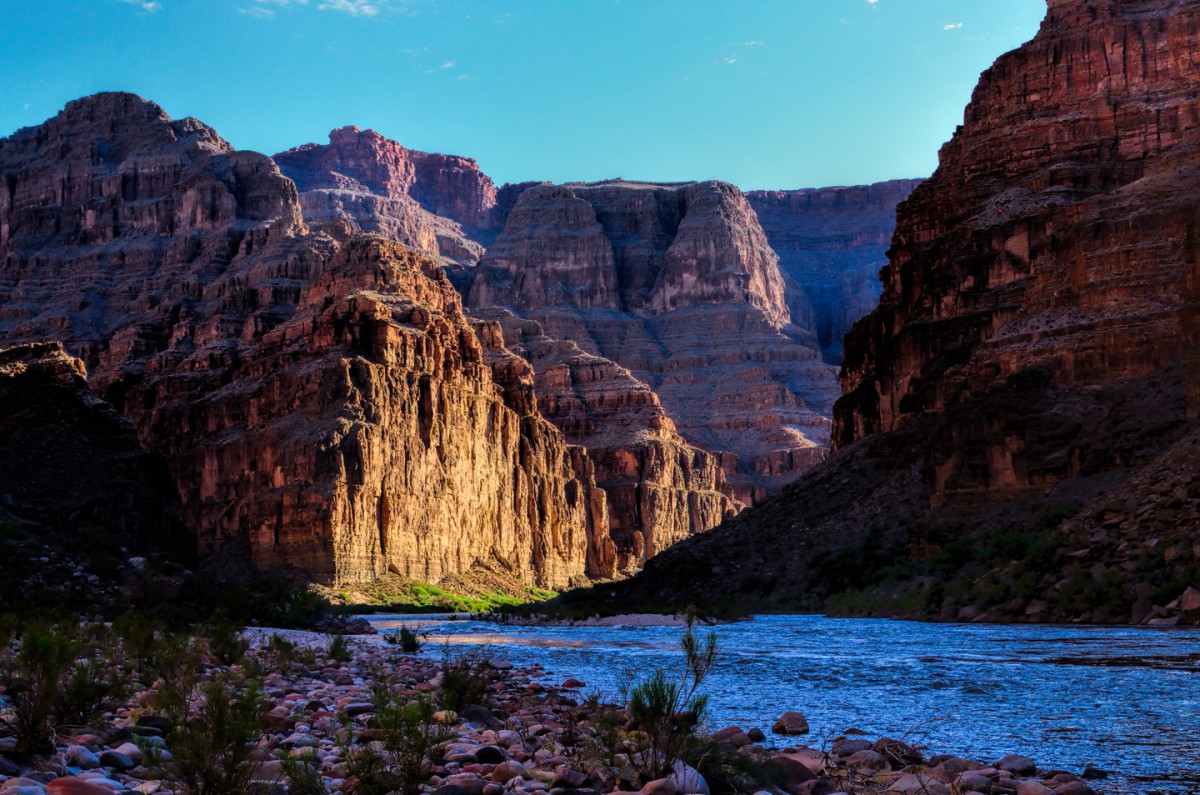
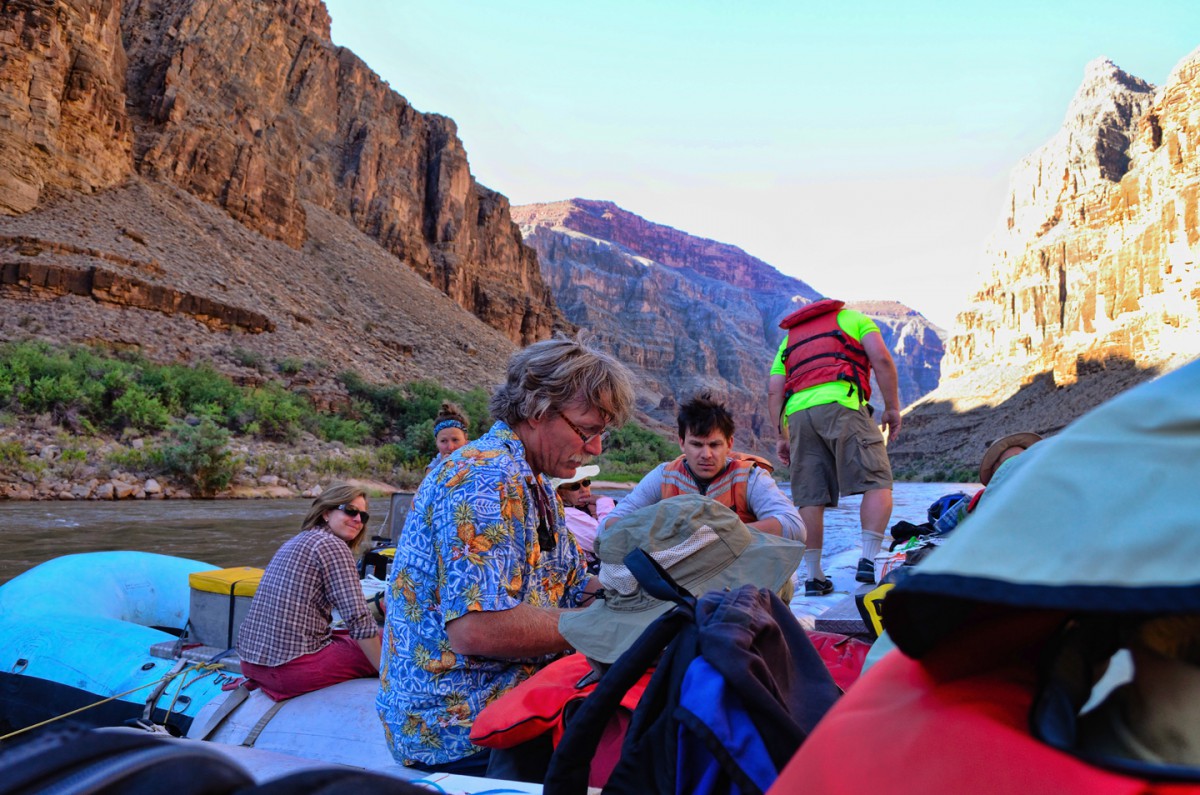
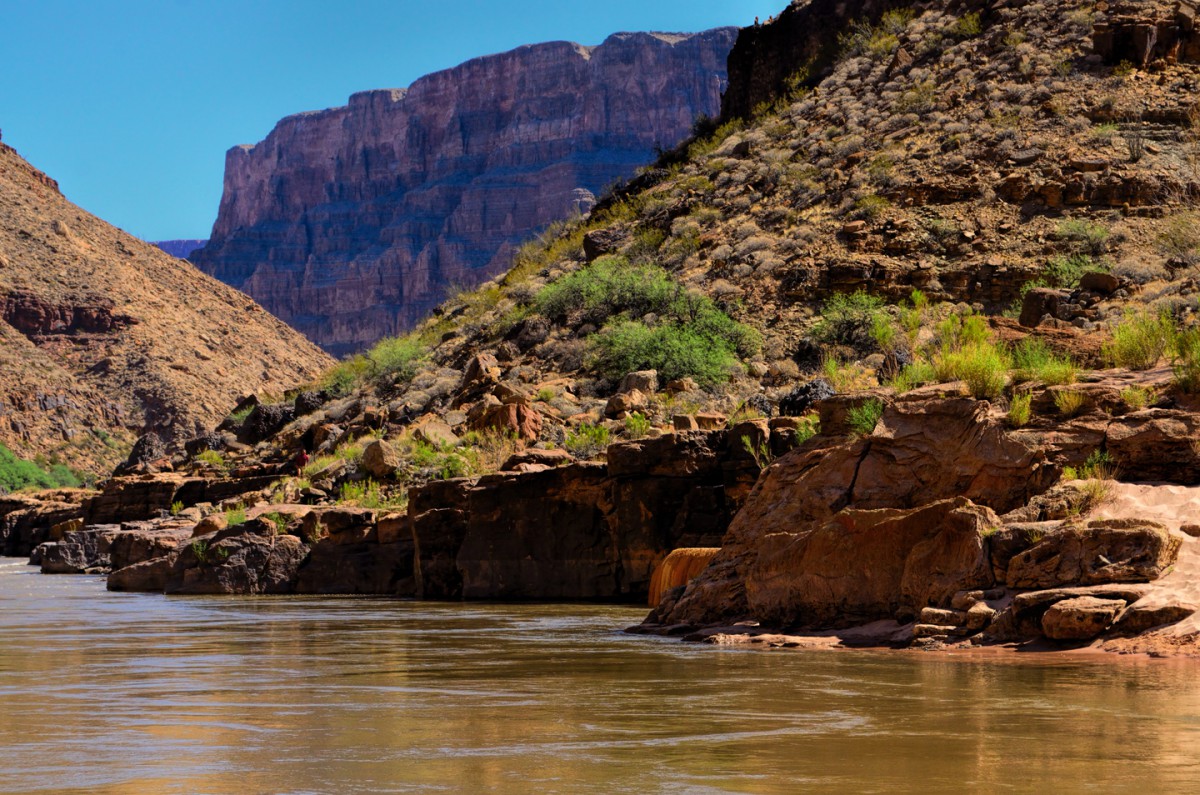
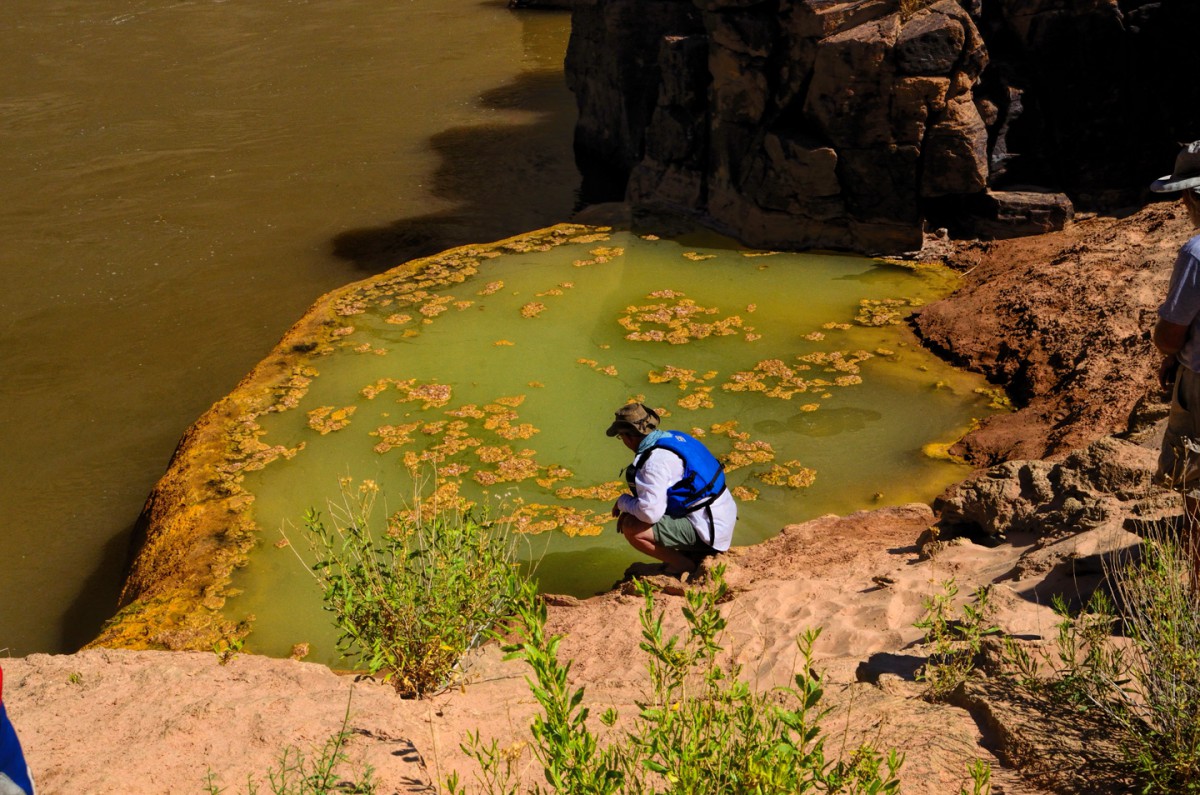
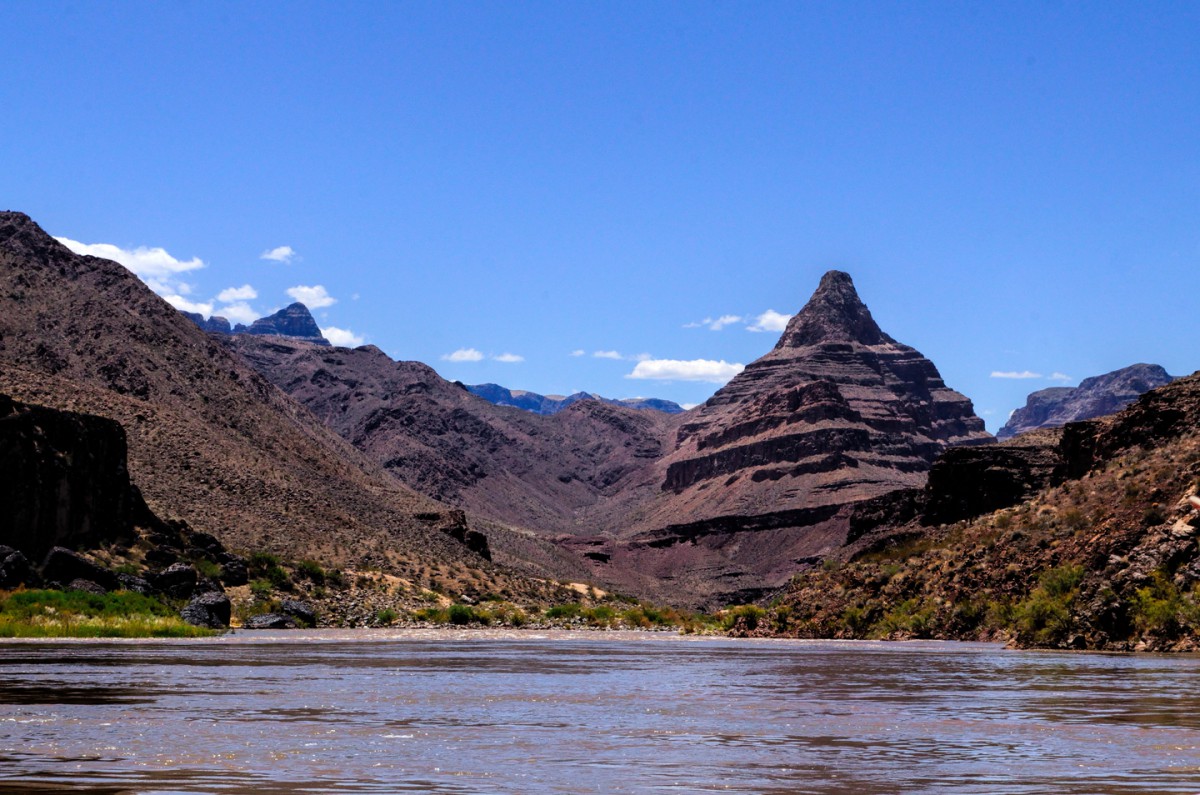

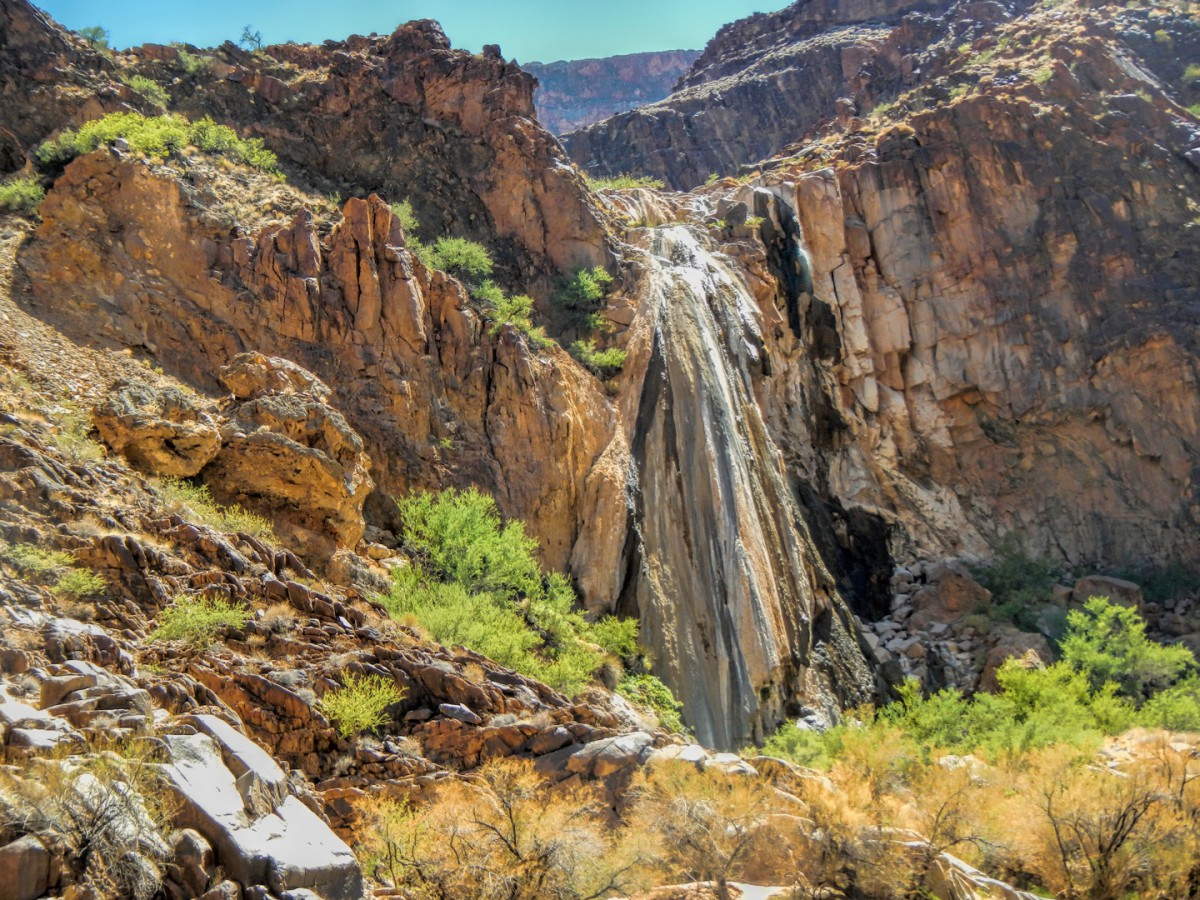
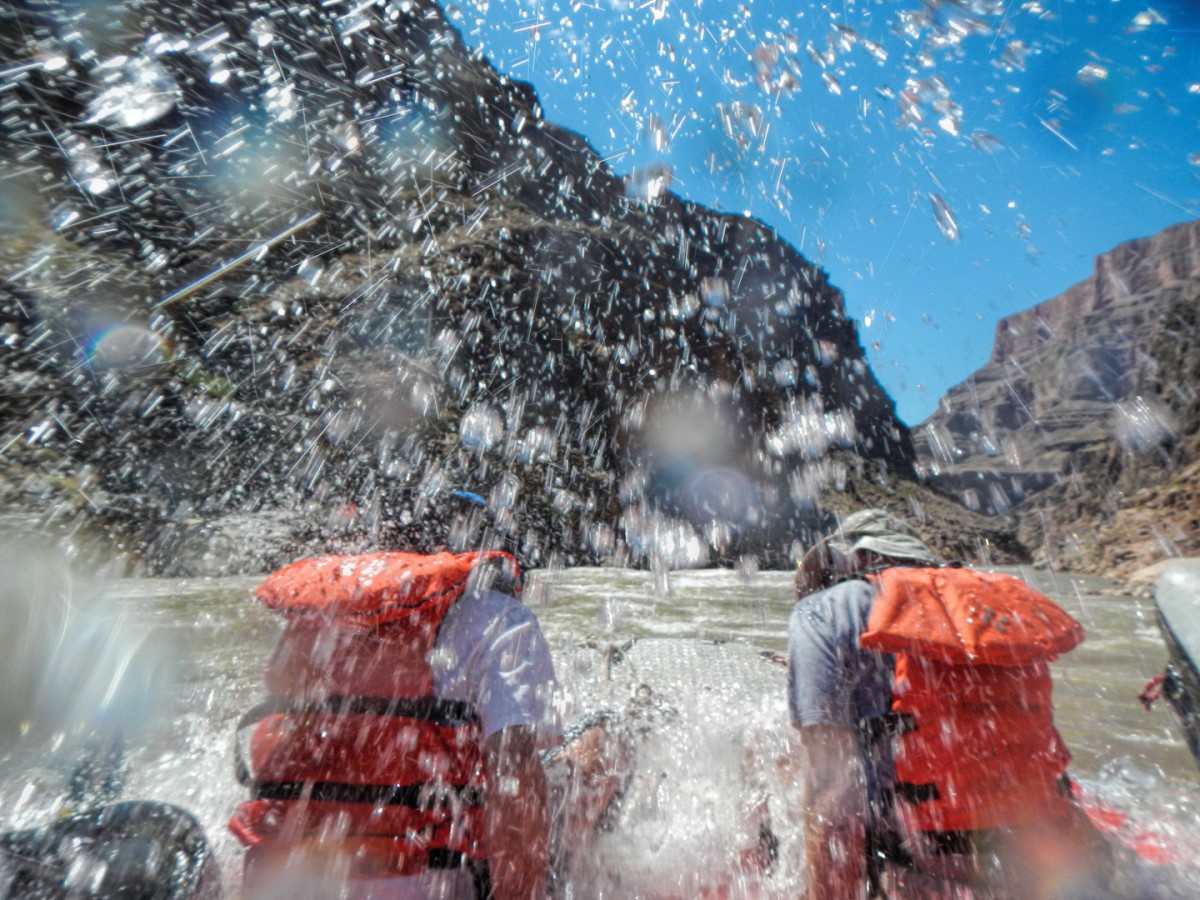
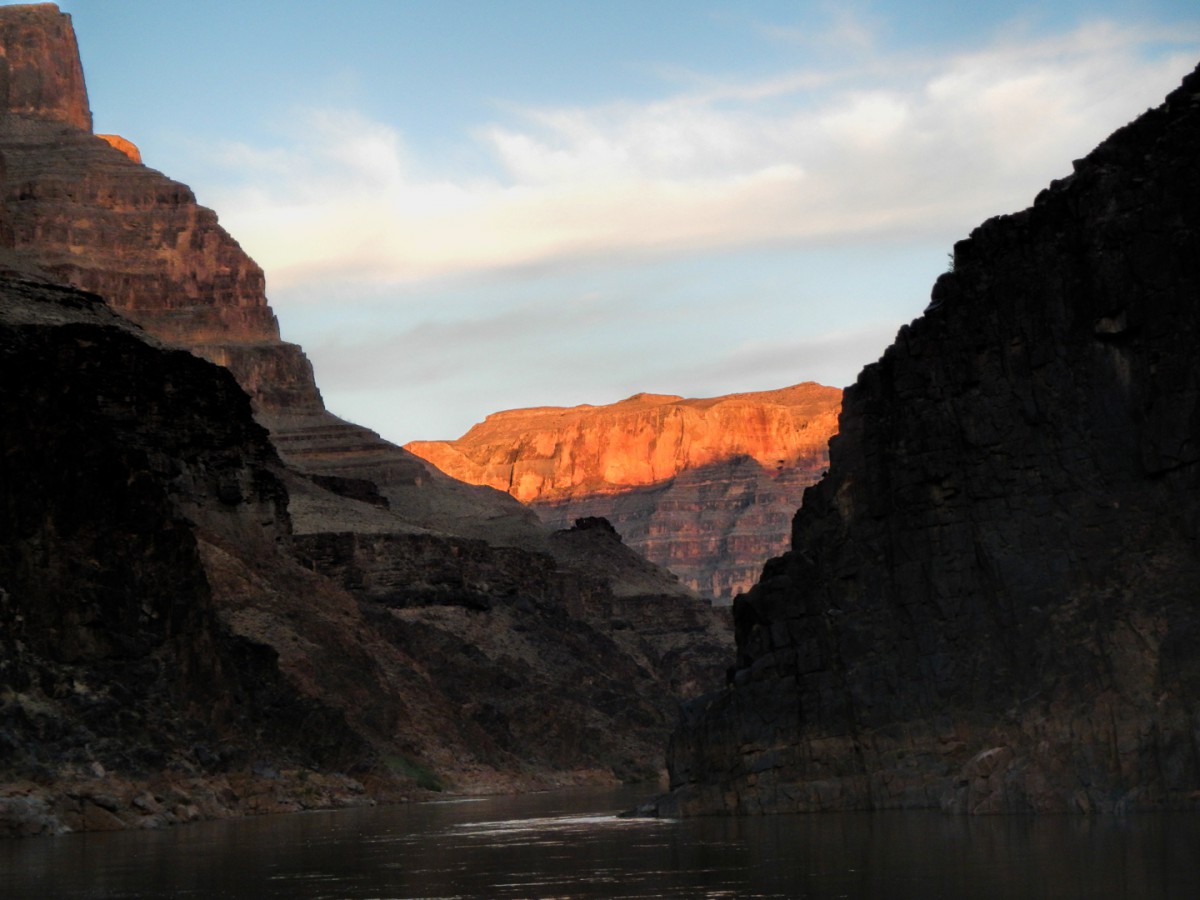

 Reply With Quote
Reply With Quote
